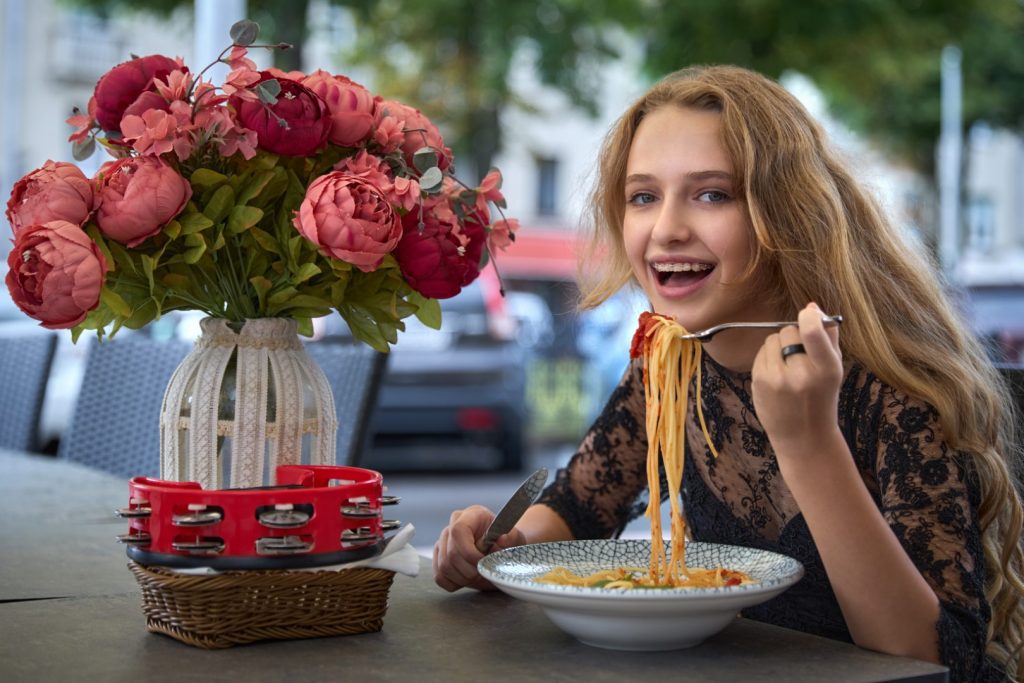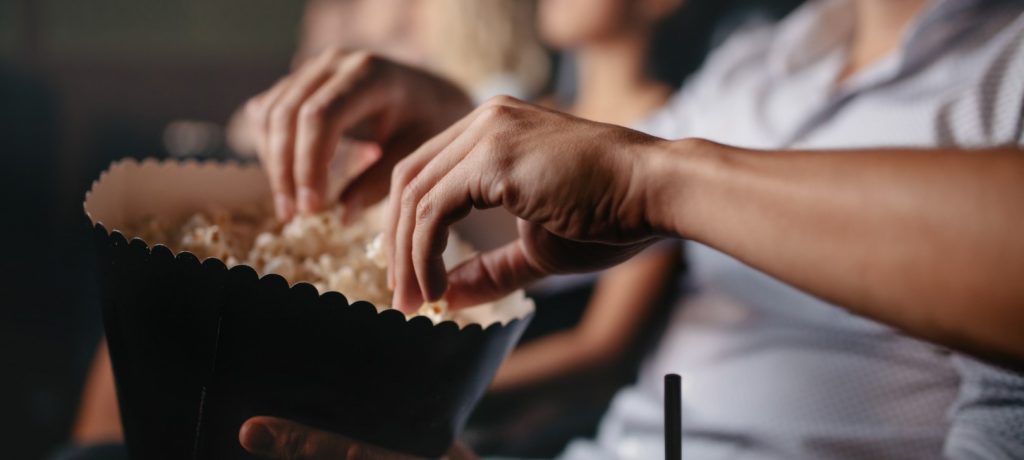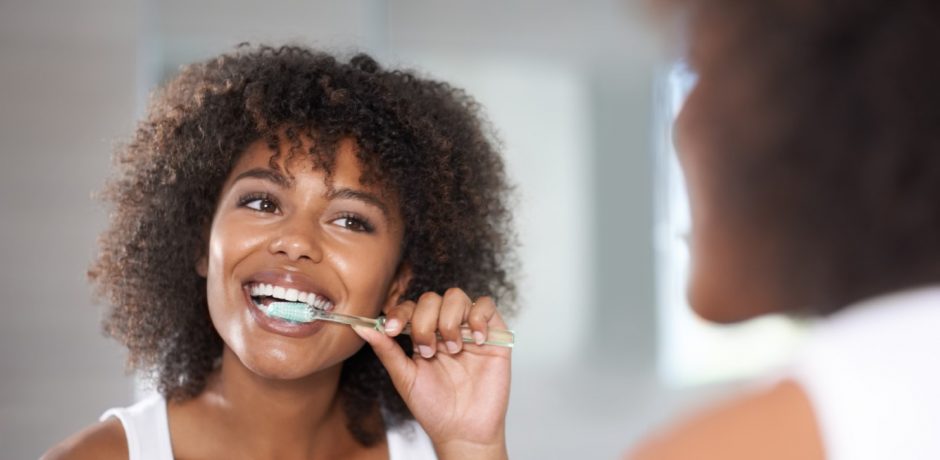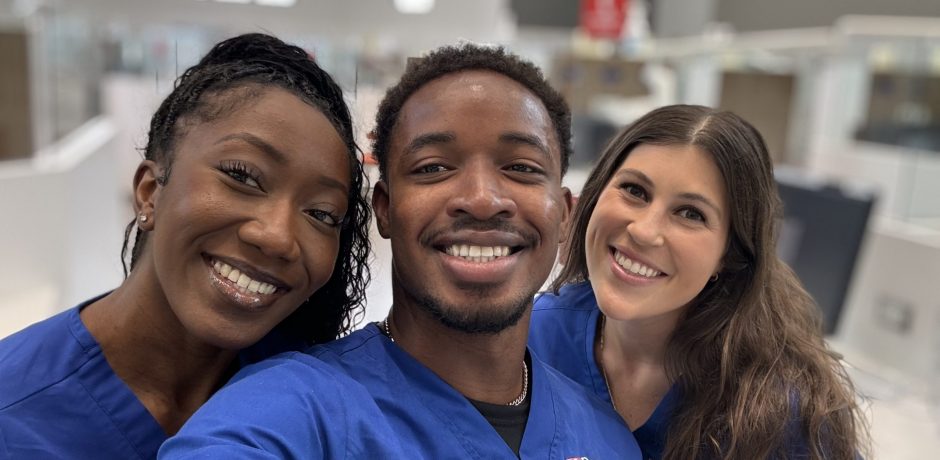“Can you eat popcorn with braces?” You’re probably not surprised the answer is “You can, but you shouldn’t!”
Orthodontic patients often worry about what they can and can’t eat while wearing braces. The dietary restrictions braces bring may initially feel oppressive.
But focusing on what you can eat with braces—which is quite a lot—as opposed to what you can’t makes the adjustment easier. It may even help you make changes to your diet that last long after your braces come off, with lifelong benefits for your oral and overall health.
Foods You Can’t Eat With Braces
Let’s address orthodontists’ “thou shalt nots” first. Here’s an overview of what you can’t eat with braces—not if you want the best results with the least amount of pain and discomfort, as quickly and cost-effectively as possible.
Sticky and Chewy Foods
 Biting down on anything chewy or sticky can pull on your braces, causing wires, bands, and brackets to loosen or even break. You may then have to make emergency visits to the orthodontist, which will prolong your course of treatment.
Biting down on anything chewy or sticky can pull on your braces, causing wires, bands, and brackets to loosen or even break. You may then have to make emergency visits to the orthodontist, which will prolong your course of treatment.
These foods also tend to get stuck in your braces and between teeth. The resulting buildup of food debris and bacteria increases your risk of tooth decay and gum disease.
While wearing braces, avoid:
- Chewing gum.
- Gummy candies.
- Caramels.
- Licorice.
- Snack bars.
- Dried fruits.
- Peanut butter.
Hard and Crunchy Foods

Even healthy but hard foods like apples or raw carrots aren’t necessarily good choices when you’re wearing braces.
Hard, crunchy foods also put too much stress on braces and can break into smaller pieces that get stuck in the braces or between teeth. These include:
- Popcorn.
- Nuts.
- Hard pretzels.
- Potato chips.
- Hard candies.
Tough Meats and Lunch Meats
Chewing tough meats and deli meats can put pressure on your braces. Small meat pieces may lodge between your teeth and braces, leading to food debris buildup, tooth decay, and gum disease. You should avoid the following:
- Steak.
- Pork chops.
- Beef jerky and other tough meats.
What To Eat After Getting Braces
We’ve covered the bad news about what you can’t eat with braces. Here’s the good news: Braces still allow you plenty of choice in your diet. The variety of foods you can eat with braces is large and full of dental and overall health benefits.
Soft Fruits
Can you eat grapes with braces? Yes! Along with bananas, melons, peaches, ripe pears, mangoes, kiwis, and blueberries. They’re all easy to chew and won’t get stuck in your braces. They’re also packed with essential vitamins and minerals that promote oral health.
Soft Breads
Tortillas, pitas, and sandwich bread are easy to chew and won’t damage your braces. Grains like rice, quinoa, and couscous are good, braces-safe options.
Soft Cheeses
Soft cheeses such as cottage cheese, brie, camembert, feta, and ricotta are easy to chew and swallow. They are good sources of calcium and casein, a protein that can help strengthen tooth enamel and promote oral health.
Cooked Vegetables
Steamed broccoli, cooked carrots, green beans, and squash won’t put extra pressure on braces. They’re also full of nutrients like beta-carotene, vitamin C, and potassium, all of which are essential for oral health.
Pasta
Most pasta shapes, including penne, rigatoni, and spaghetti, are safe and easy to eat when cooked well. Plus, pasta can be a blank canvas for any number of delicious sauces and toppings. (Just be sure you avoid dishes with hard chunks like nuts, which could get stuck in your braces.)
Mashed Potatoes
This classic comfort food’s smooth, creamy texture makes it a natural choice when wearing braces. Plus, mashed potatoes are full of nutrients like potassium, vitamin C, and fiber. Add some flavor by mixing in garlic, chives, or cheese, or season with cinnamon or brown sugar. (Do watch out for crunchy toppings like bacon bits or fried onions.)
Yogurt
Yogurt makes an excellent snack when you have braces if you choose a variety without fruit pieces or other chunks. Yogurt is high in protein and can contain healthy bacteria that help protect teeth from cavities and tooth decay. Yogurt also helps reduce inflammation and fight off bad breath.
Bite-Sized Pieces Make Eating With Braces Easier
 When you have braces, how you eat is as important as what you eat. Switch to bite-sized pieces of food that are easier to eat and won’t harm your orthodontic appliances.
When you have braces, how you eat is as important as what you eat. Switch to bite-sized pieces of food that are easier to eat and won’t harm your orthodontic appliances.
What’s more, you can still occasionally have some of those “thou shalt not” foods if you’re eating them in bite-sized pieces. By cutting fruits and vegetables like apples, carrots, and celery into smaller pieces, you can still enjoy their taste and nutritional benefits without risking damage to your braces.
Even smaller pieces of sticky and chewy foods can still get stuck, so eat them as little as possible to avoid harming your teeth, braces, or overall health.
Penn Dental Medicine at PHMC Public Health Campus on Cedar offers limited orthodontic services. With a little bit of planning and awareness, we’ll help you enjoy eating as you achieve a beautiful smile. You can schedule an appointment with PDM at PHMC on Cedar by calling us at 855-887-9229.






